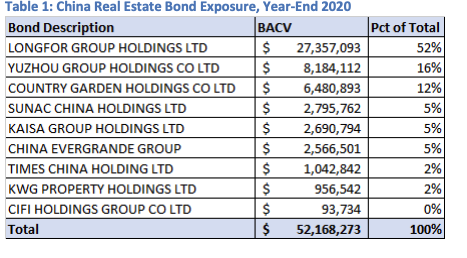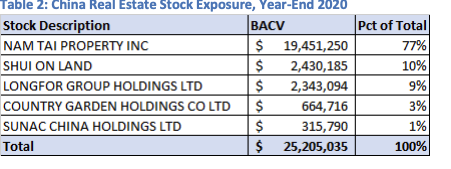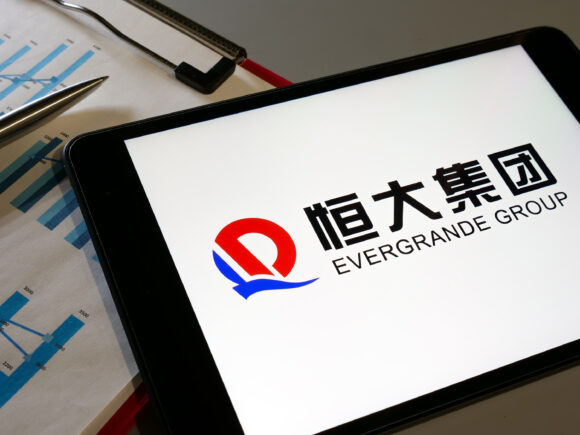The U.S. insurance industry faces only minimal exposure to land development companies in China as one of that country’s largest property developers, Evergrande, appears on the brink of collapse.
According to analysts with the National Association of Insurance Commissioners (NAIC) Capital Markets, at year-end 2020, the total exposure of U.S. insurers to China real estate was a minimal $77.3 million in total bonds and stocks. About 67%, or $52.1 million, was in bonds, with the remaining $25.2 million in stocks.
China Evergrande, a large residential property developer, missed an $83.5 million interest payment due on some of its dollar-denominated bonds on Sept. 23. It has an additional 30 days to meet the obligation without triggering a default.
With the COVID-19 pandemic negatively affecting property sales in China (Chinese home sales fell in September), Evergrande is experiencing a cash shortage amid a heavy debt burden of approximately $88 billion at the end of June 2021.
Why China Evergrande’s Debt Problems Pose Systemic Risk
The NAIC analysts note that given it is one of the largest developers in the People’s Republic of China, many investors are concerned Evergrande’s challenges “could spill over to other PRC real-estate developers and negatively affect investor confidence globally.”
Chinese authorities have not clearly indicated whether they would provide any financial support in the event of a default, according to the NAIC. But they have tried to reassure that the situation is manageable.
The largest bond exposure, representing about half of the industry’s Chinese real estate-related bond exposure, was with Longfor Group Holdings Ltd., whose corporate bond ratings were investment grade, or BBB/Baa2/BBB by S&P Global (S&P), Moody’s Investors Service (Moody’s), and Fitch Ratings (Fitch), respectively. S&P and Moody’s currently have a stable outlook, while Fitch has a positive outlook on those ratings.

About 80% of the China real estate bond exposure was with large insurers, or those with more than $10 billion assets under management, and life companies accounted for 71% of the total bond exposure. The largest stock exposure was Nam Tai Property Inc., representing 77% of the industry’s total Chinese real estate-related stock exposure, at $19.5 million.
Stock exposure was predominantly with property/casualty (P/C) companies, and half was with small companies, or those with less than $500 million assets under management.

The NAIC said that due in part to the small overall exposure, Chinese real estate bonds and stocks do not raise concern regarding credit risk among U.S. insurer portfolios. Notwithstanding, the analysts advised that on an individual portfolio basis, exposure should be monitored as a percentage of total capital and surplus.
China Provides Assurances that Evergrande Crisis Is Being Contained
People’s Bank of China Governor Yi Gang and other Chinese lenders and officials have said that the Evergrande risk can be contained. Thus far, credit stress hasn’t spread much beyond Chinese developers, Bloomberg reports.
Was this article valuable?
Here are more articles you may enjoy.



 Court Orders Justice Family Coal Companies to Pay $1M to Liberty Mutual Unit
Court Orders Justice Family Coal Companies to Pay $1M to Liberty Mutual Unit  10 Highest Class-Action Settlements in 2025 Eclipsed $70B Total: Duane Morris
10 Highest Class-Action Settlements in 2025 Eclipsed $70B Total: Duane Morris  Alliant Latest to Sue Howden US Over Alleged ‘Smash-and-Grab’ Poaching
Alliant Latest to Sue Howden US Over Alleged ‘Smash-and-Grab’ Poaching  SIAA Announces Strategic Partnership With Progressive
SIAA Announces Strategic Partnership With Progressive 

